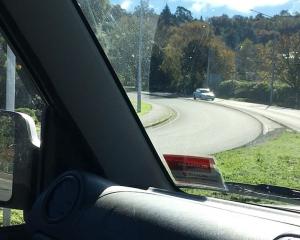
Remembered on south coast
Thank you for great coverage for Anzac Day activities in Otago in Saturday’s edition
Here on the south coast the Taieri Beach community service was well covered with a photo and story.
Elsewhere locally, Brighton had over 250 attendees (the largest in recent years); the parade was led by Brighton Pony Club as a mark of respect for the Otago Mounted Riflemen. The service was addressed by Flt Lt Kevin Weir.
At Green Island a well-supported service was held at the Memorial Rose Gardens, taken by Rev Rolly Scott. At Green Park Cemetery a service with a cenotaph guard provided by the City of Dunedin Army Cadet unit was well attended by over 200 in fine, sunny conditions
Great community support on the south coast continues.
Road kill
The ODT article (21.45.25) re possum road kill, with the Department of Conservation’s disparaging comments, showed that the department is at cross purposes with itself.
Some years ago, and for decades afterwards, Doc bandied around a figure of 70 million possums in New Zealand. This was done by two scientists who drove from north Auckland to Wellington, counting road kill possums. From that they calculated 70 million, a figure that was ludicrous to those who knew the outdoors. Indeed a Landcare Research scientist told Doc in 1994 it was a "back of a cigarette packet calculation".
So when it suits its political narrative, Doc is only too happy to count road kill possums.
However I would totally disagree with Doc’s Wayne Costello when he said highway observations were not a representation of possum and predator control efforts and success in South Westland. Perhaps they're not an accurate count — but they are an indicator.
Having been a regular visitor to the area from Lake Hawea through to Jackson’s Bay and up to Fox Glacier for many years, I always take notice of possum road kill. When aerial 1080 was first used in those areas road kill was virtually nil; in recent years road kills have been increasing and just a few weeks ago I counted 37 dead possums in very few kilometres and gave up counting.
That poses the question: is 1080 failing because possums and predators are becoming 1080 resistant and/or bait shy? I was told years ago that poisons should be changed every five years to avoid poison resistance.
When was the last time bait changes have been made when targeting possums?

Kiore more likely not to be unwanted stowaways
Re Charles Higham's article (Weekend Mix 26.4.25), I find it difficult to believe that kiore were "stowaways" on early Polynesian voyages.
Rats certainly stowed away on European ships (which had plenty of nooks and crannies) but waka had no inaccessible holds. It took weeks to sail between island groups.
Preparing for a 2-3 week voyage would have required careful control over everything brought aboard. If kiore had snuck on, and were eating limited provisions, someone would have noticed during the voyage and dispatched them. For a breeding population to survive on board would have been highly unlikely.
Perhaps kiore were brought on purpose. But, why bring "pests’' to a pest-free land? That is a question with a strong European bias. There is nothing to indicate that Polynesians considered kiore to be pests. After all, Pacific rats had been inhabitants of most islands in the Pacific for millennia, and Polynesians would have certainly considered them native. Unwanted stowaways? Probably not.
Address Letters to the Editor to: Otago Daily Times, PO Box 517, 52-56 Lower Stuart St, Dunedin. Email: editor@odt.co.nz











